Despite being relative newcomers to the international wine scene, Argentine wines actually have a long pedigree. The industry began shortly after the arrival of the Spanish way back in the 1500’s and quality wines have been produced in the country ever since. The 19th and 20th century mass immigration period from Europe saw French, Italian, German and other newcomers expand production and now the country has a respected and established international reputation for good quality products – the Malbec varietal probably being its best known. More detail on the history of winemaking in Argentina can be found here.
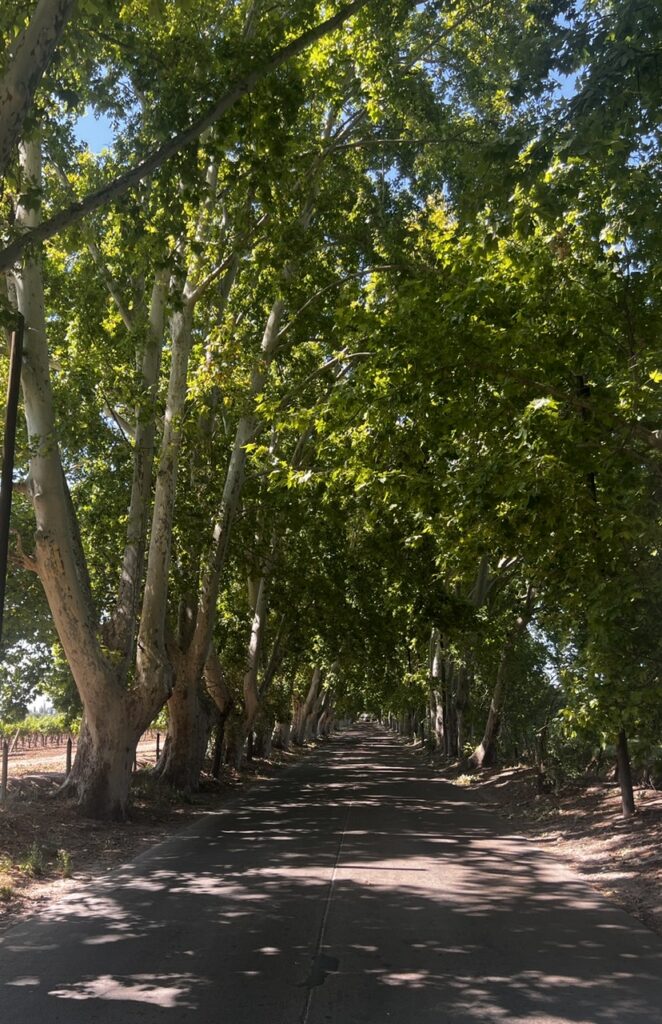
Guided by the extremely helpful staff at the Mendoza tourism office we chose a few different wineries to visit and set out south to explore. Domaine Bousquet, founded by a Frenchman, was highly recommended so we started there. A wonderful Andean backdrop setting, superb wines and staff who could not be more obliging. Would recommend this one to anyone heading to Mendoza.
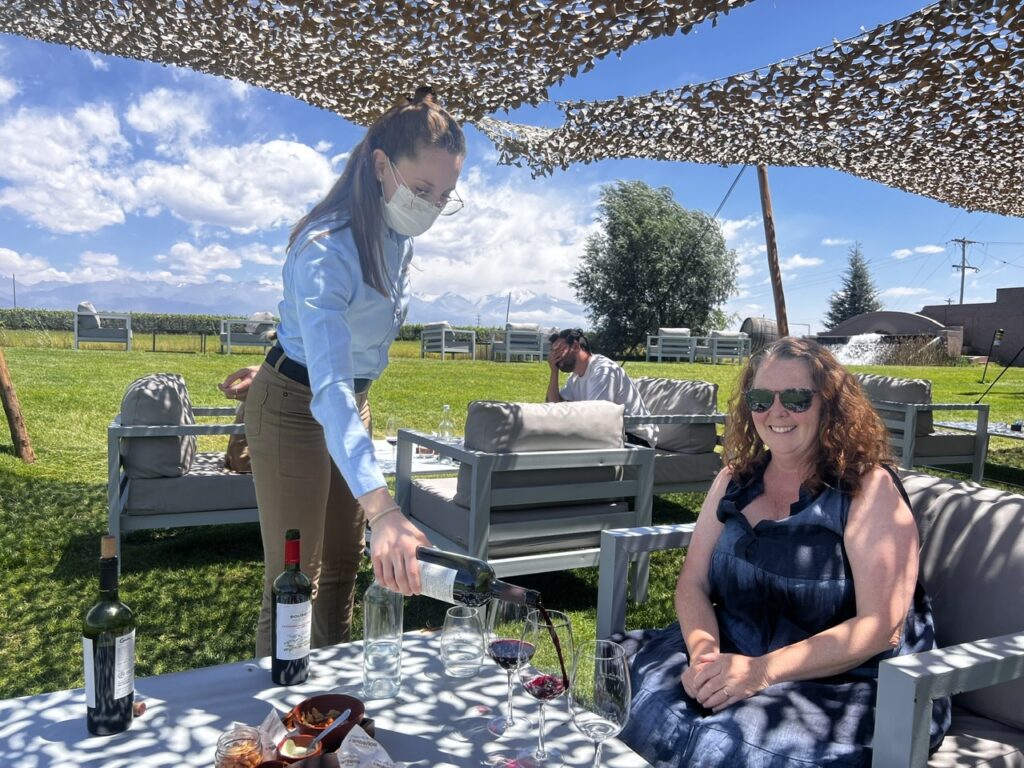
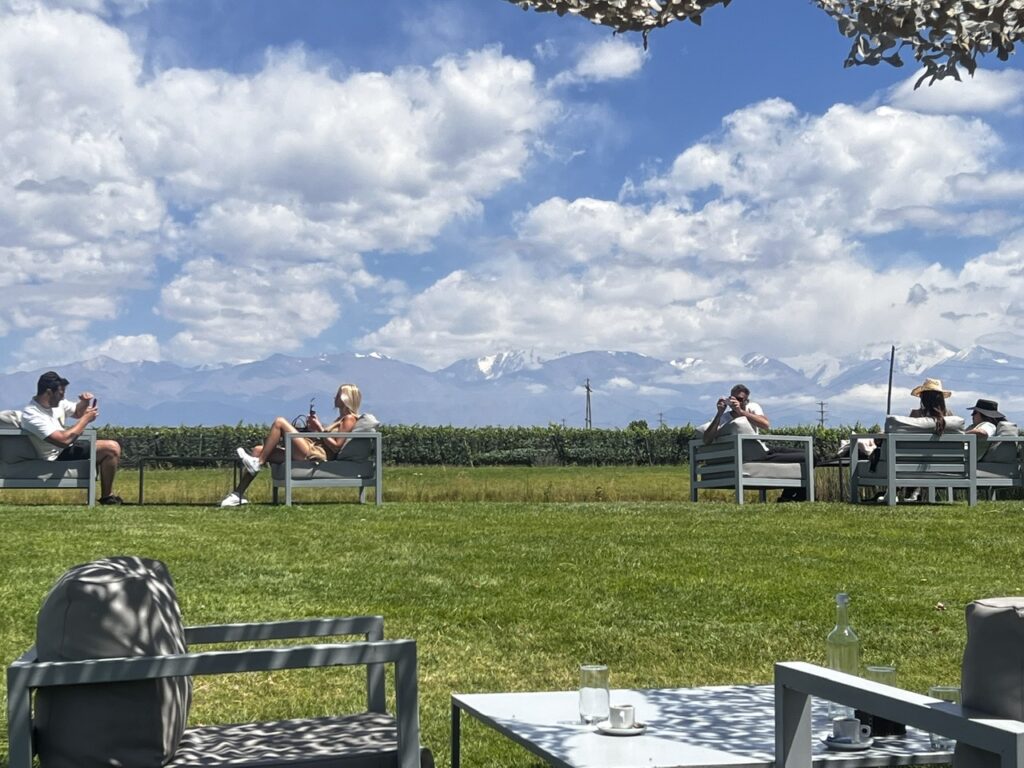
The staff there recommended a smaller, more rustic, local, “boutique” winery as our next stop to contrast the Domaine Bousquet experience. Atamisque Winery fit the bill perfectly – in fact their Pinot Noir was Lois’s favorite wine. Got to spend some time with their adorable, but aging, German Shepherd dog, Adolpho. He’s been trained ( it seems ) to approach every seated guest and nuzzle his head on their lap.
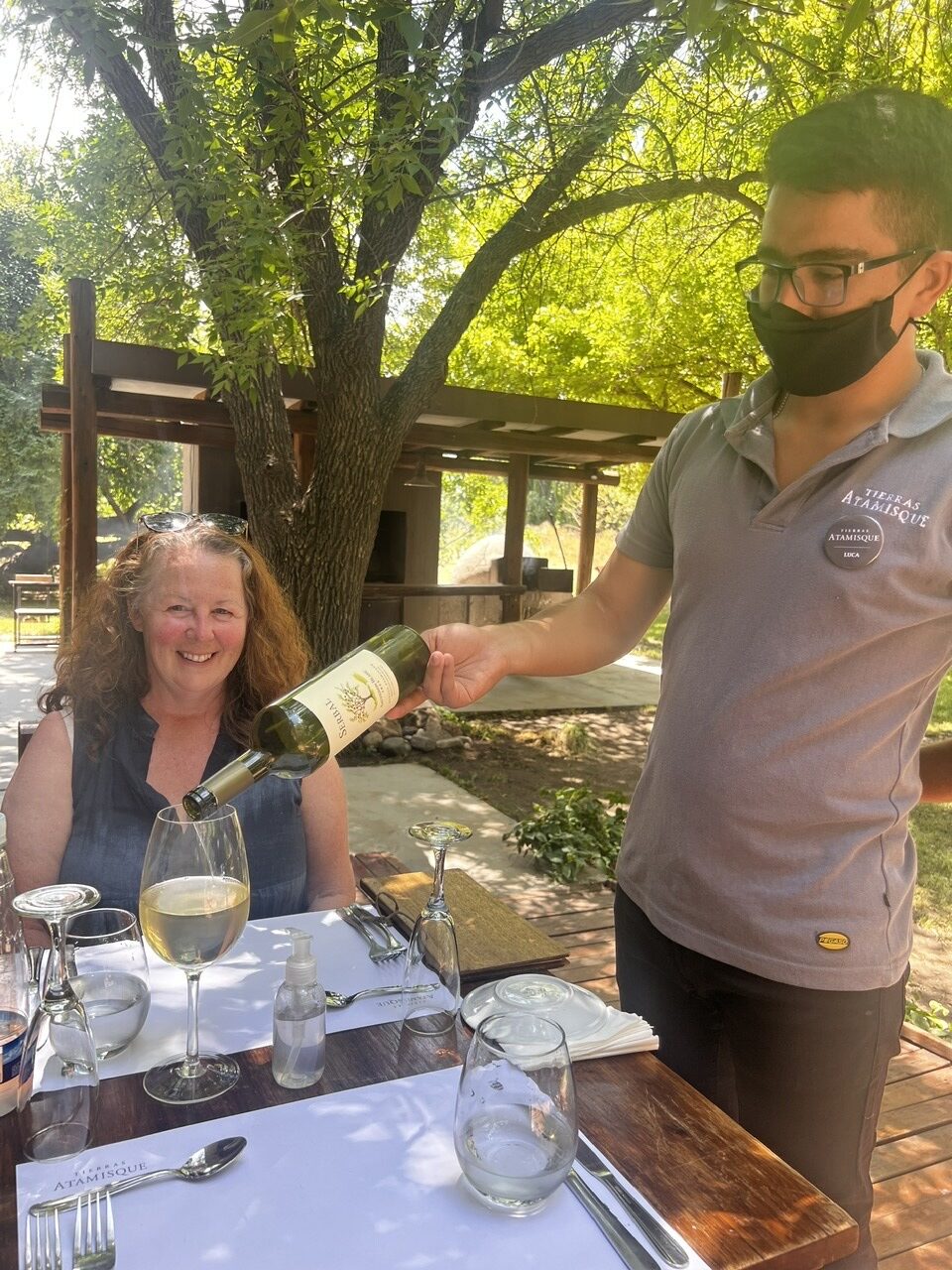

Our next day was spent relaxing at and enjoying the delights of Posada Cavieres, a similarly small, winery/lodge run by Hans Devloo from Belgium. Hans has been in the wine business for 15 years and compliments his wine production with a Tuscan style accommodation lodge and restaurant. He has a soft spot for overlanders and invites self contained folks like us to stay on the property while exploring the area. Spent a most enjoyable, relaxing and educational couple of days with him.
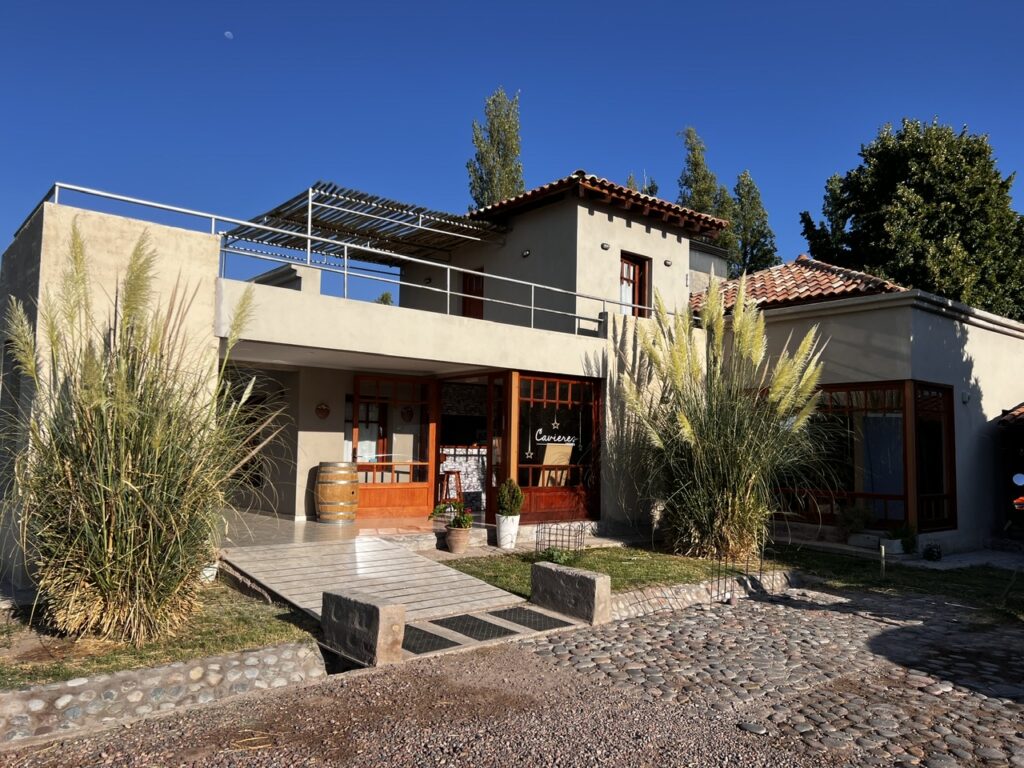
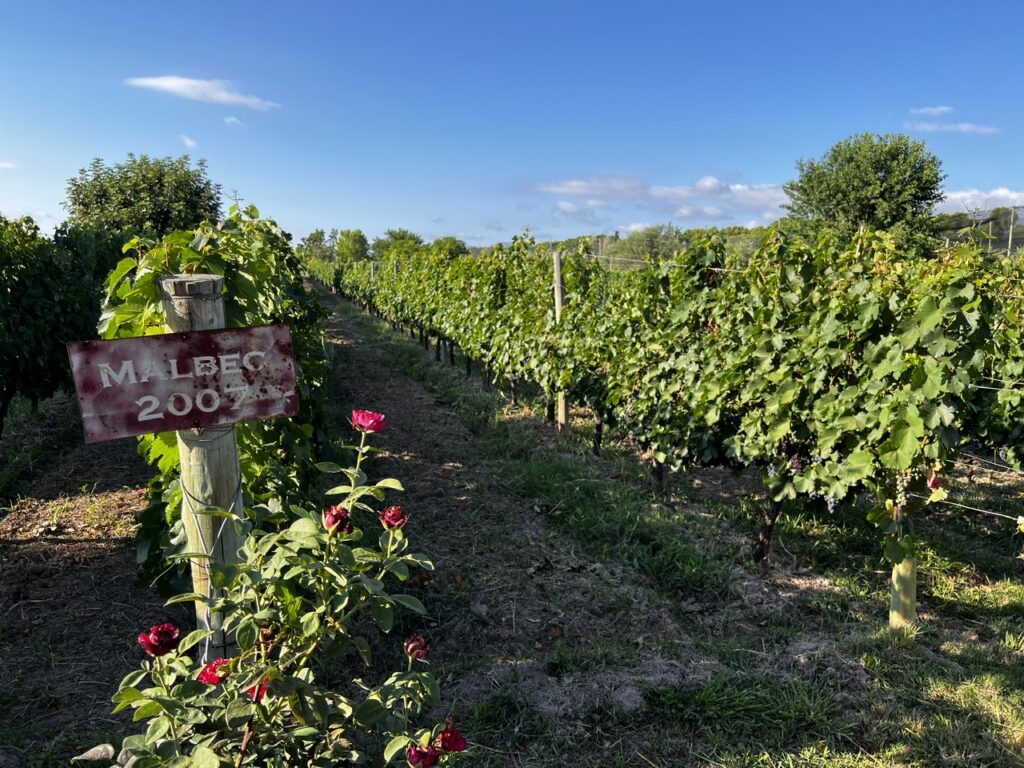
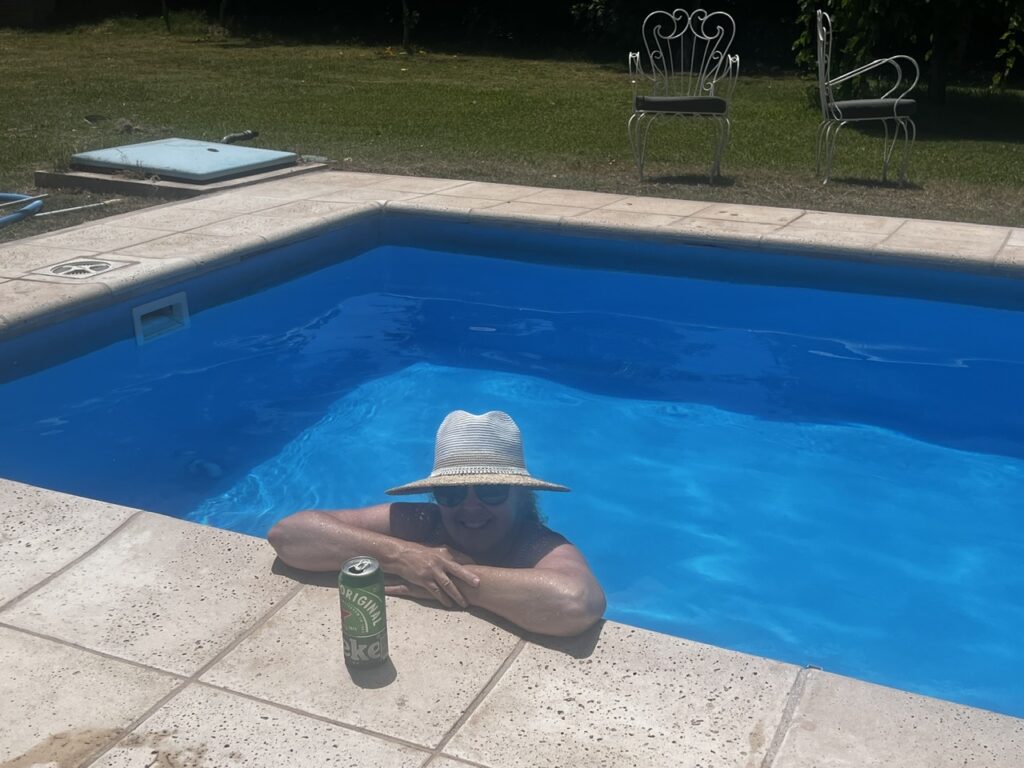
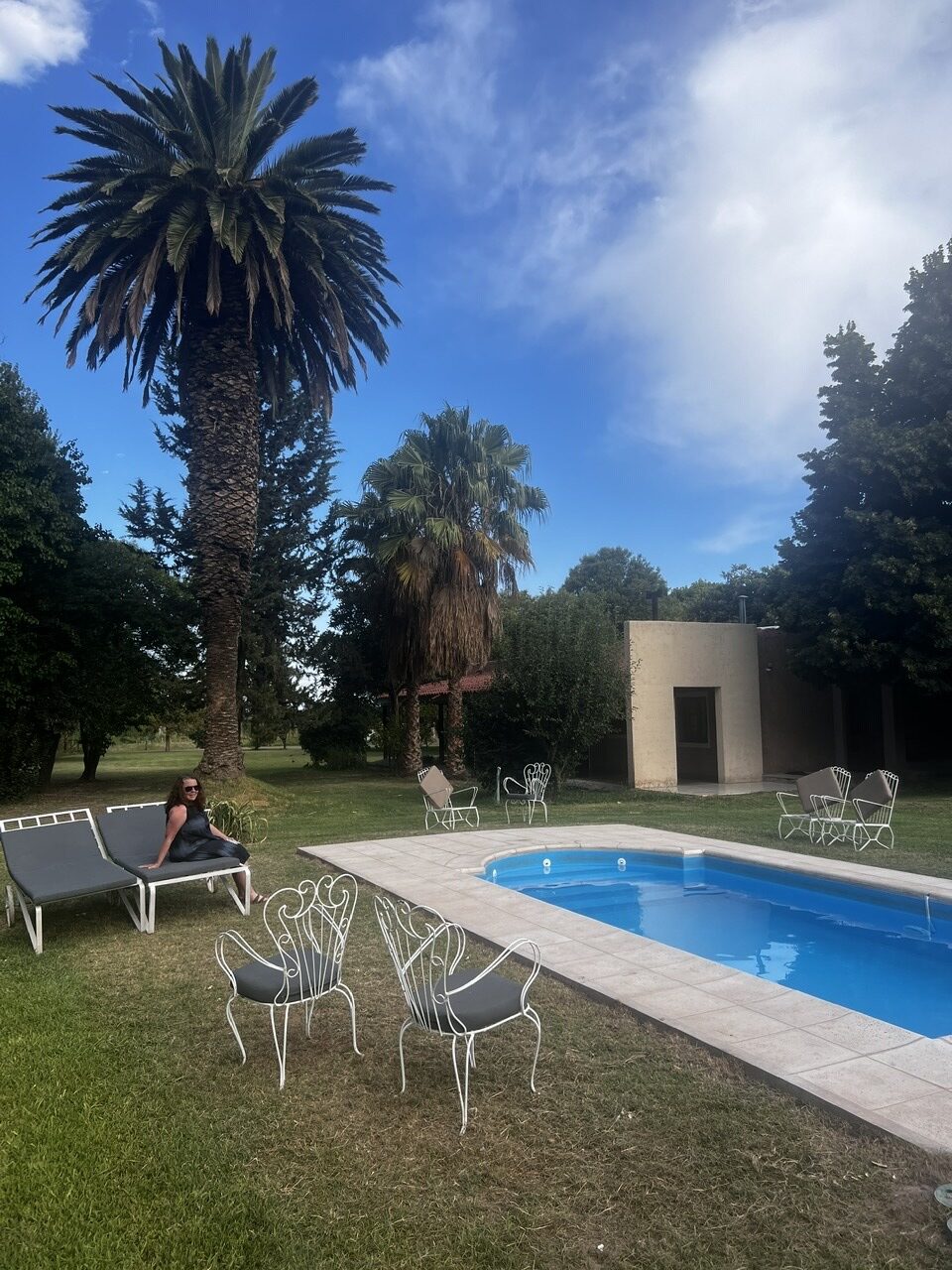
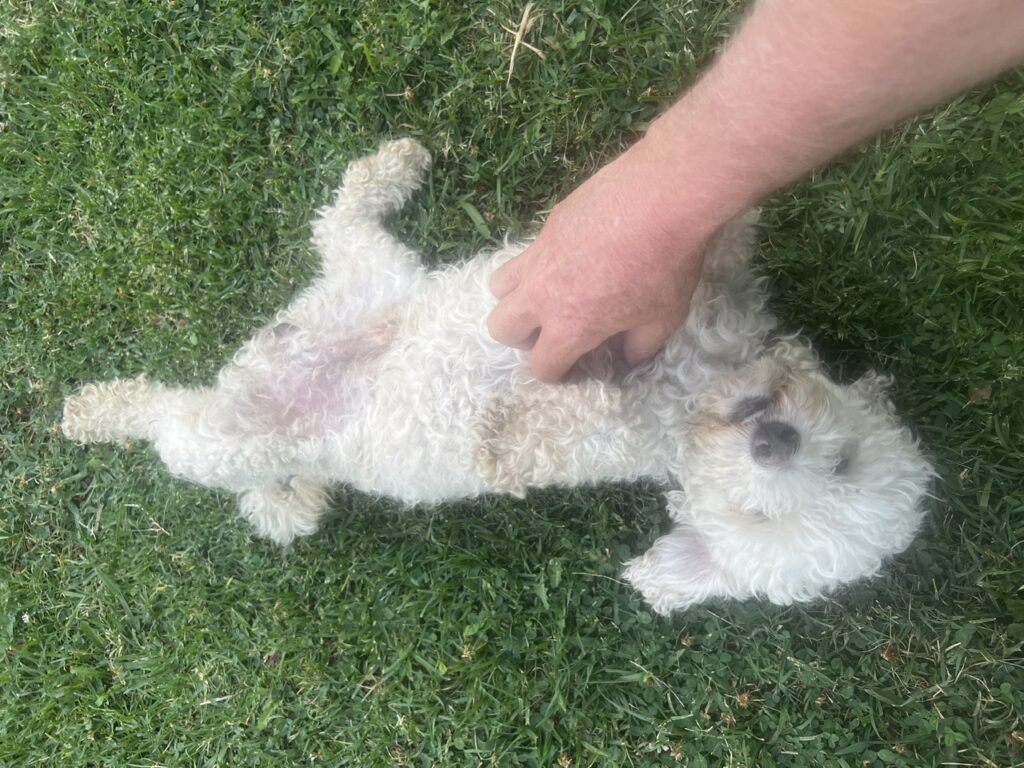
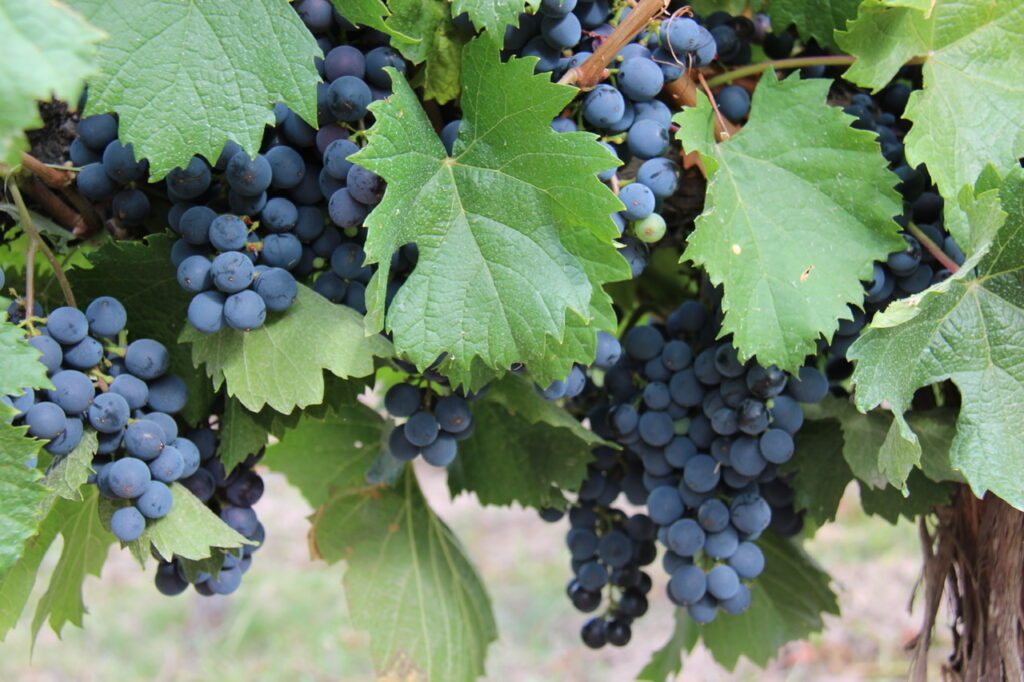
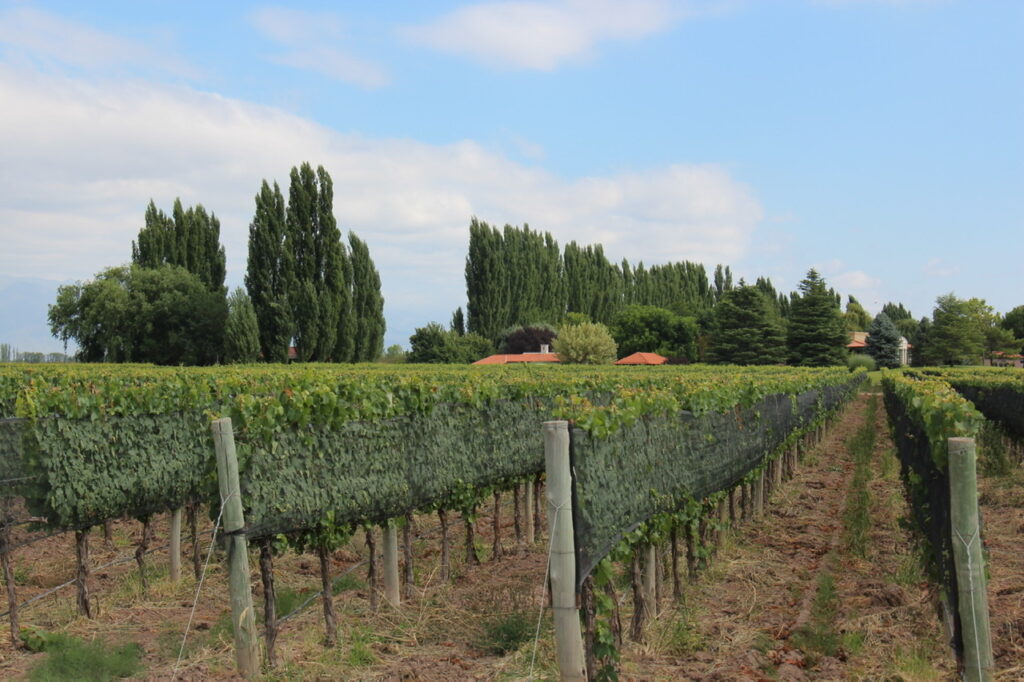
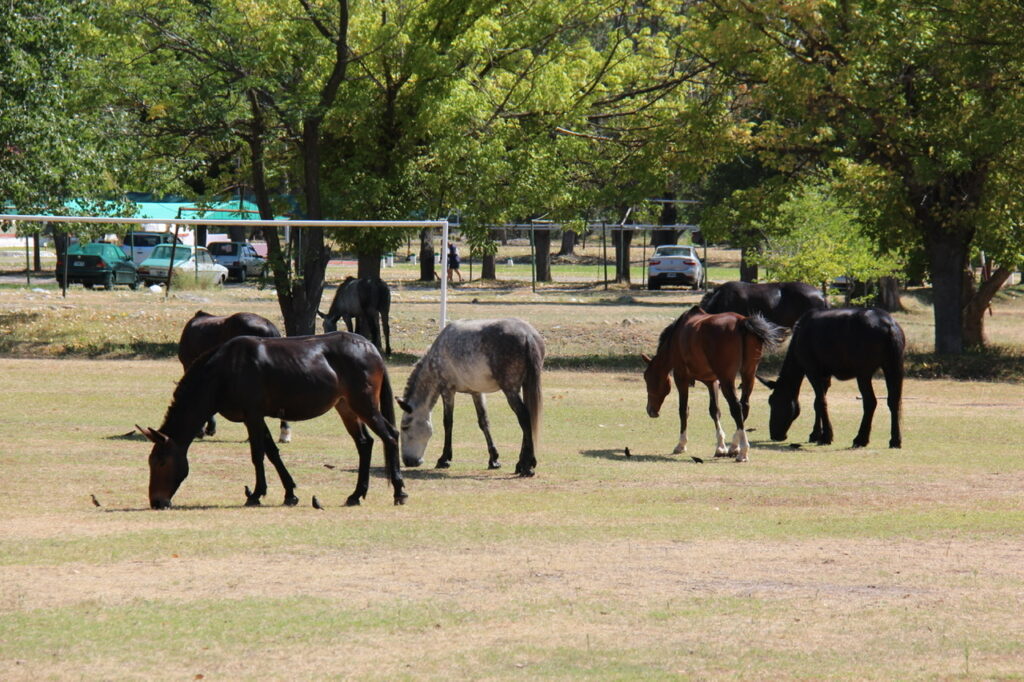
One could, literally, spend weeks ( even months ! ) touring the many wineries around Mendoza – there are so many. But we had other sights of interest further north and Route 40 would take us to most of them. First up was the desert sand dunes near Lavalle, supposedly the only true “dunes” in South America. Not quite the Sahara of course but definitely worthy of a stop given we literally passed right by. For the next couple of days it was simply a series of long hauls and getting miles ( or kms ) under our belt as we headed towards Salta, our next major destination. Fortunately the long journey was broken up with a couple of reasonably notable sights, changing scenery and an interesting rest stop.
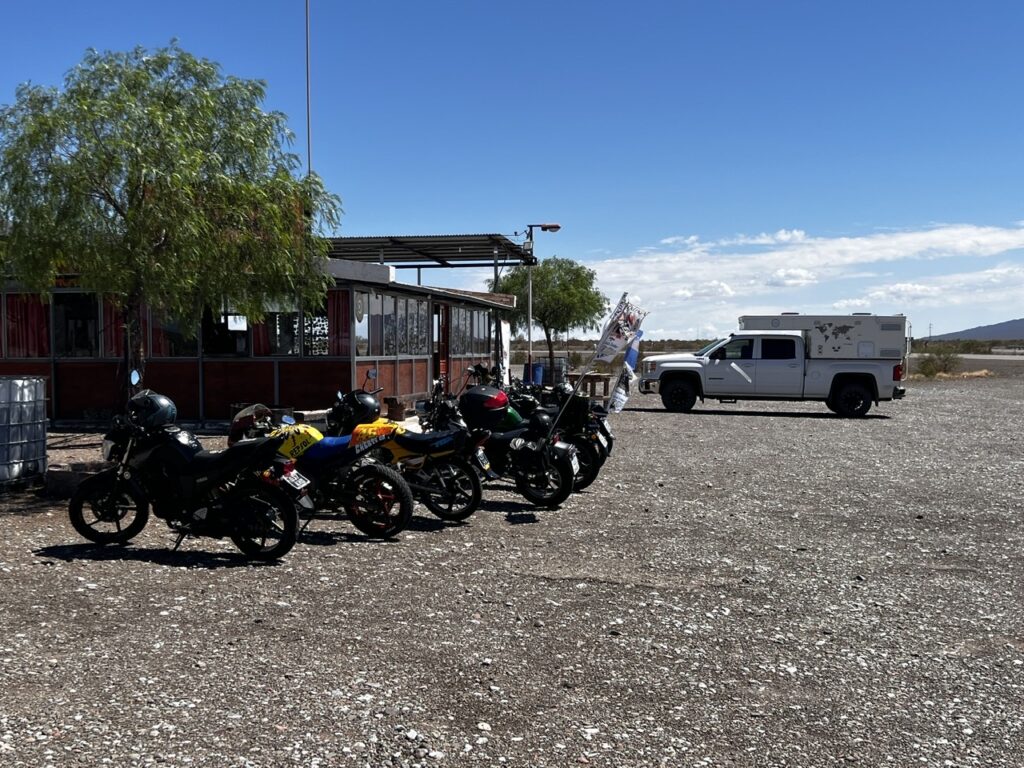
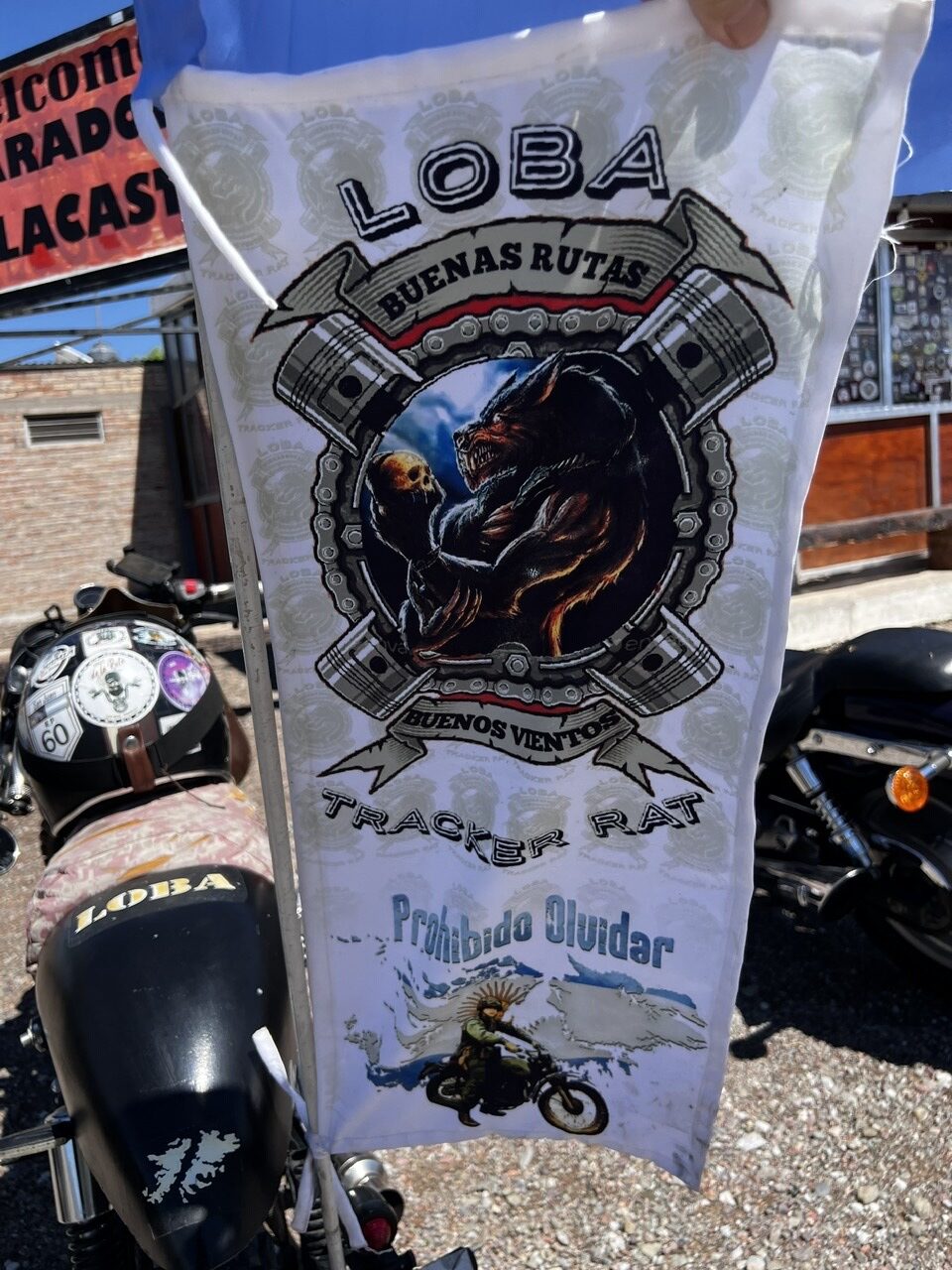
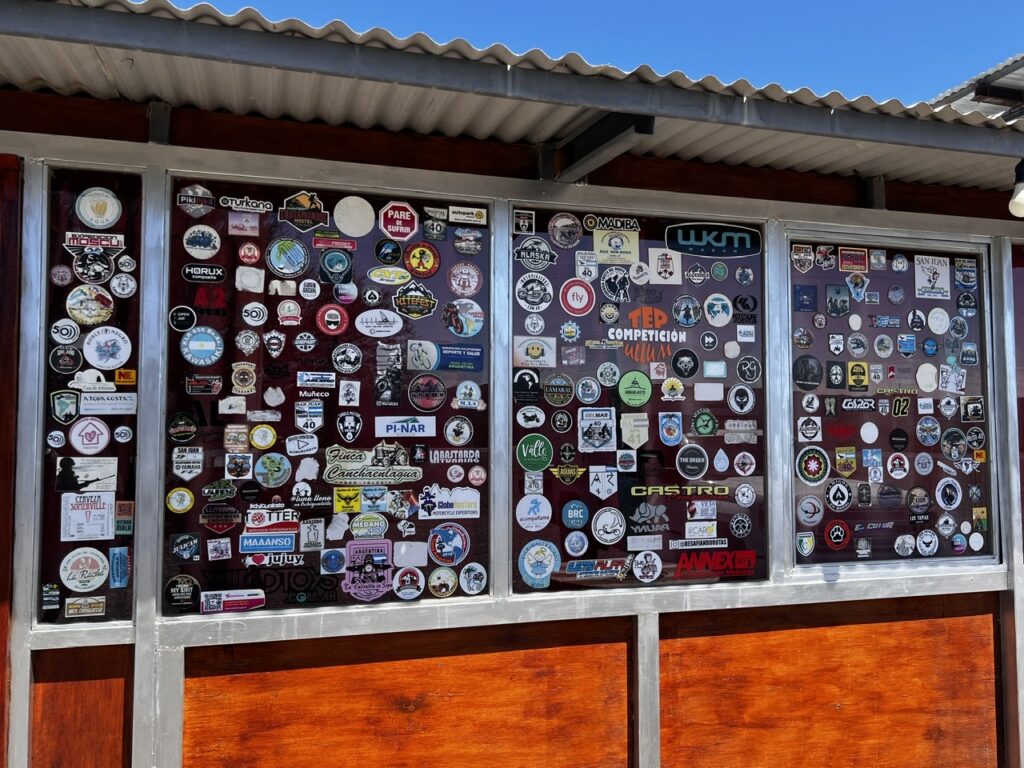
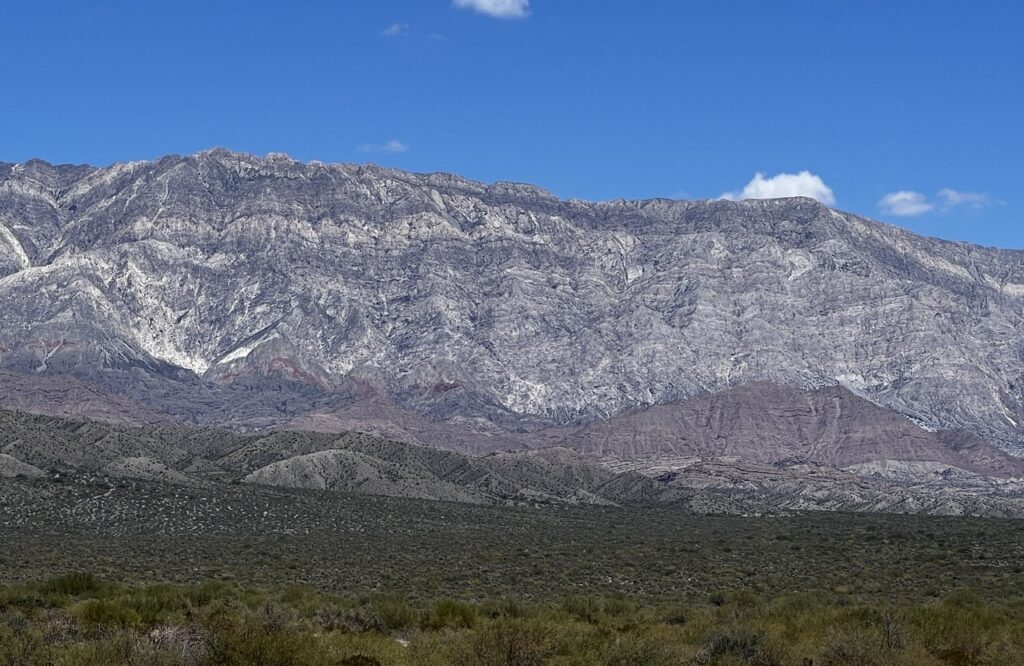
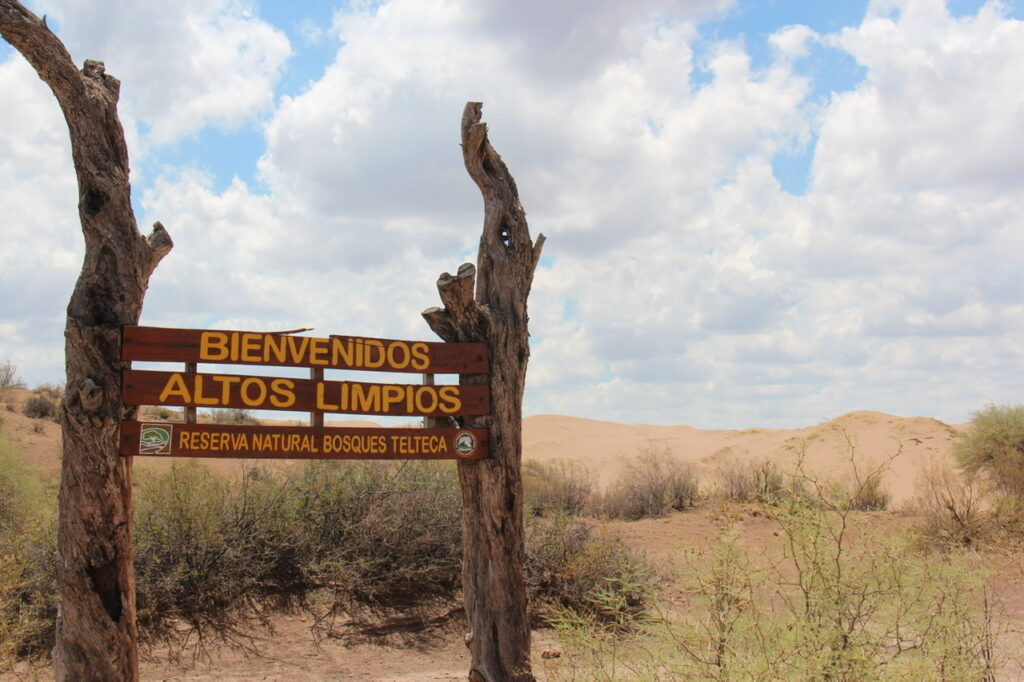
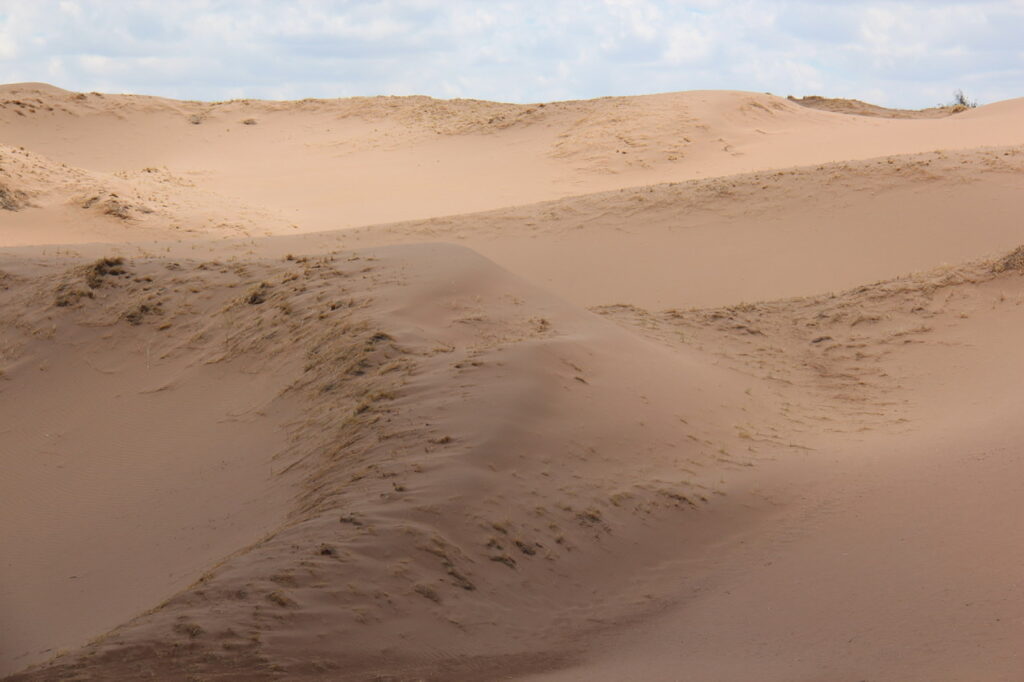
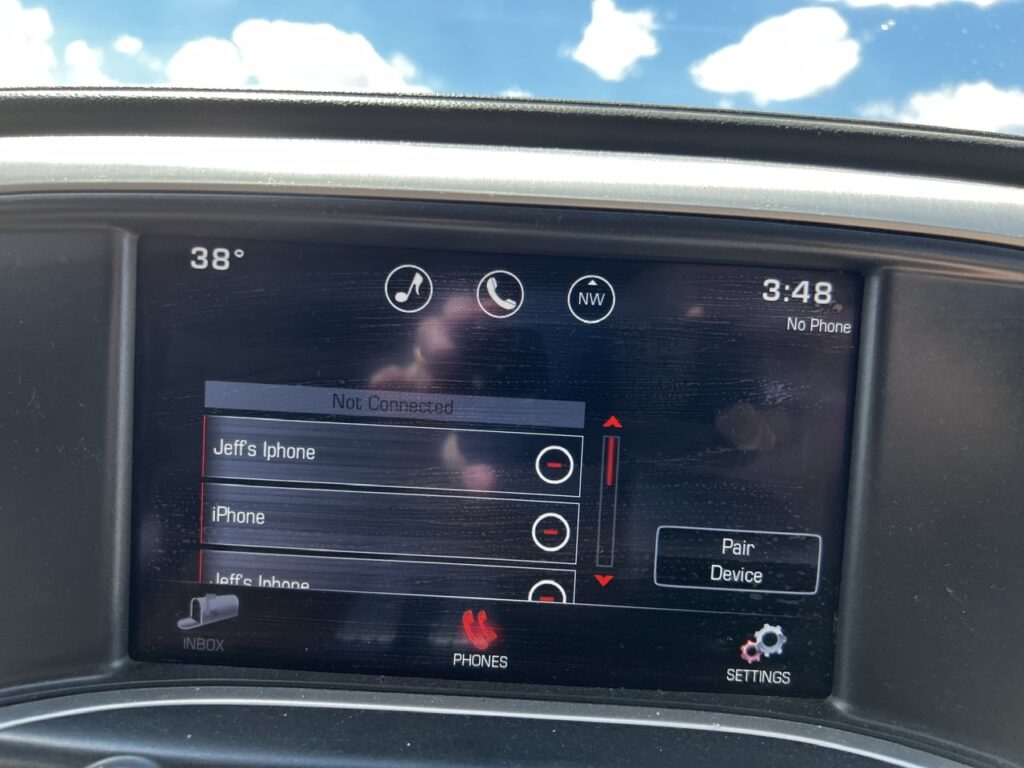
Ishigualasto Provincial Park is renowned for its panoramic views, colored rock formations and dinosaur fossils ( the on site camping facilities were impressive too ). Sadly, due to rain the day before we could not do the self driving tour. What we could see from the viewpoint and in the museum was impressive but definitely missed the full experience.
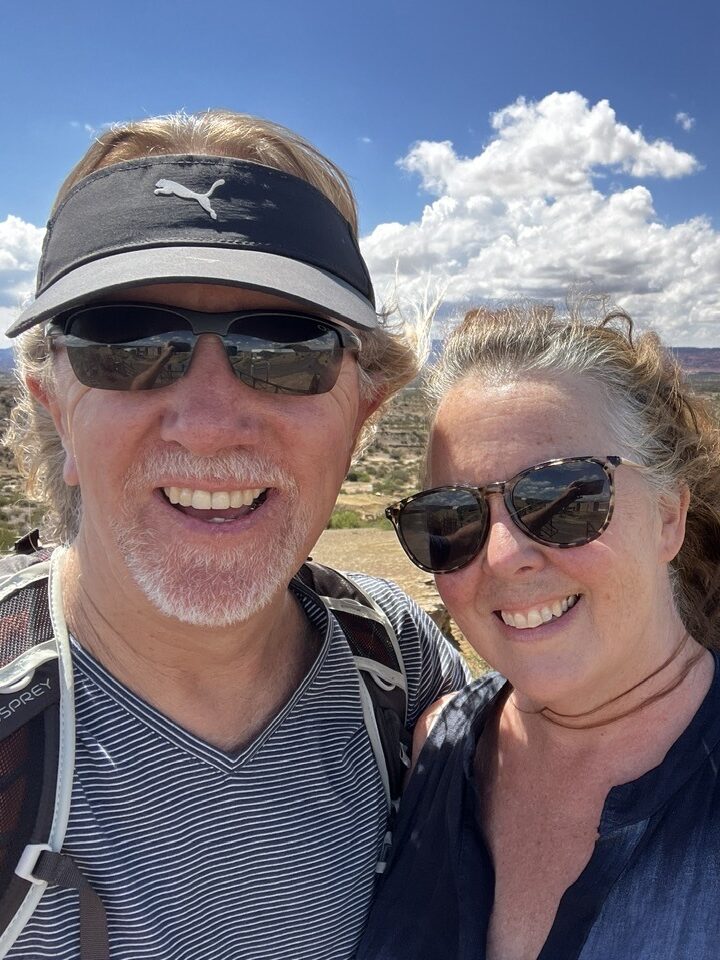
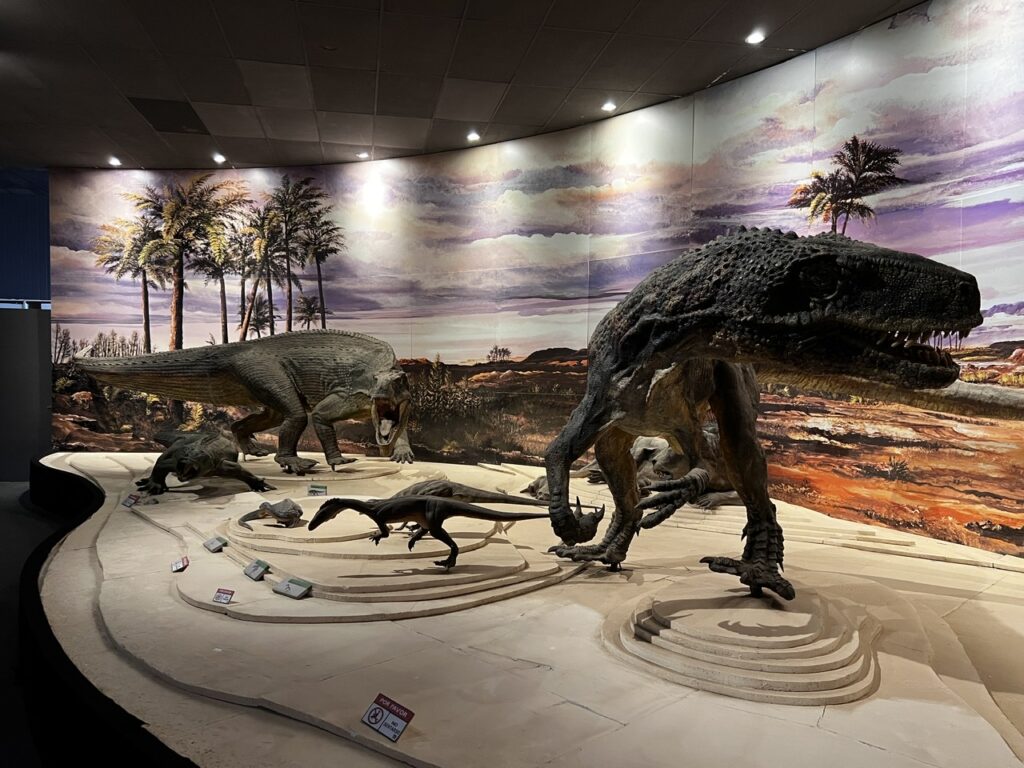

Beyond Ischigualasto we took route 76 through Talampaya Provincial Park ( much the same offerings as Ischigualasto), then on through La Union, east to Chilecito via the scenic Cuesta de Miranda before turning north again through to San Blas, Belen and on towards Cafayete, an historic town famous for its colonial architecture and nearby wineries.
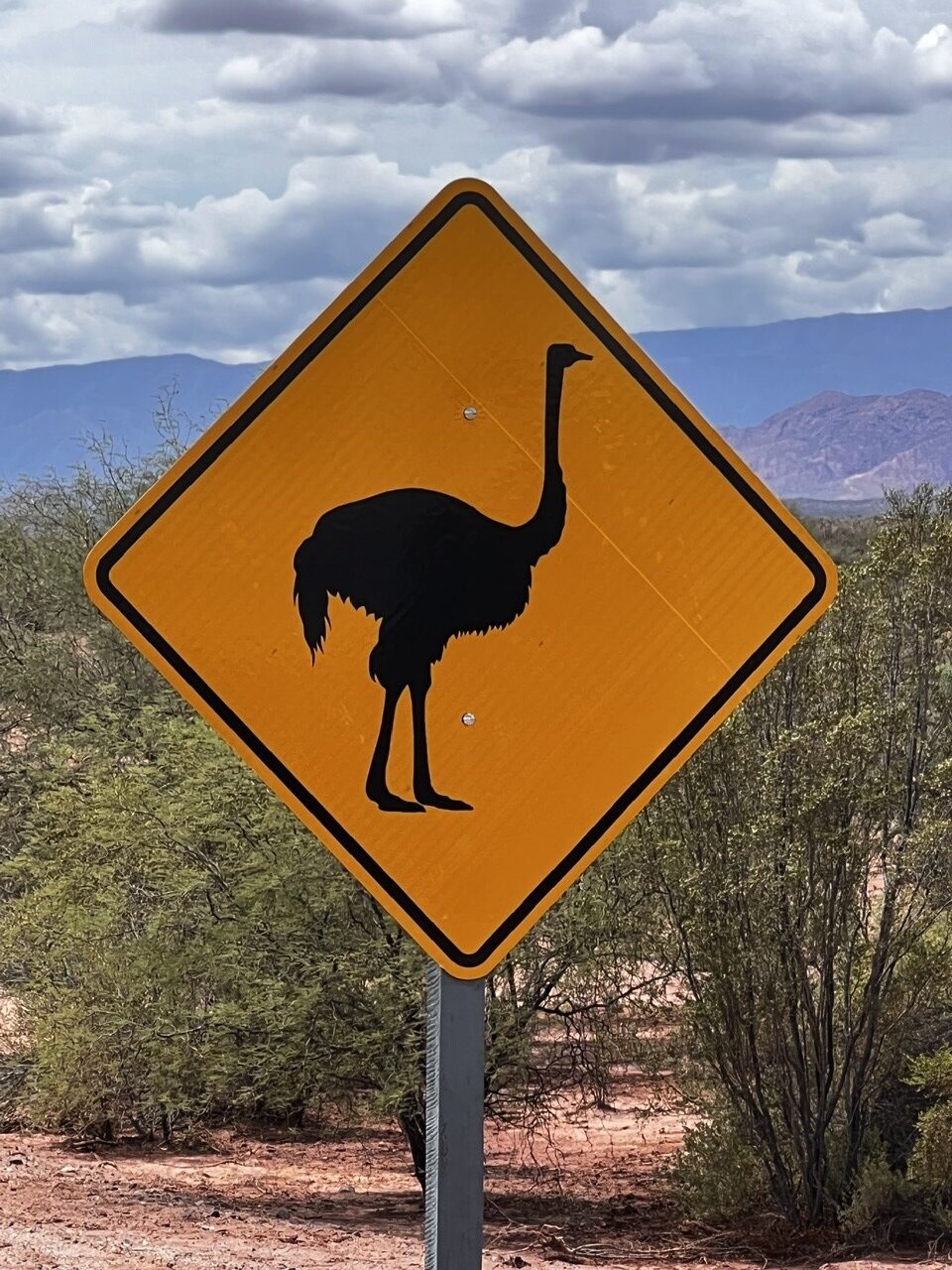
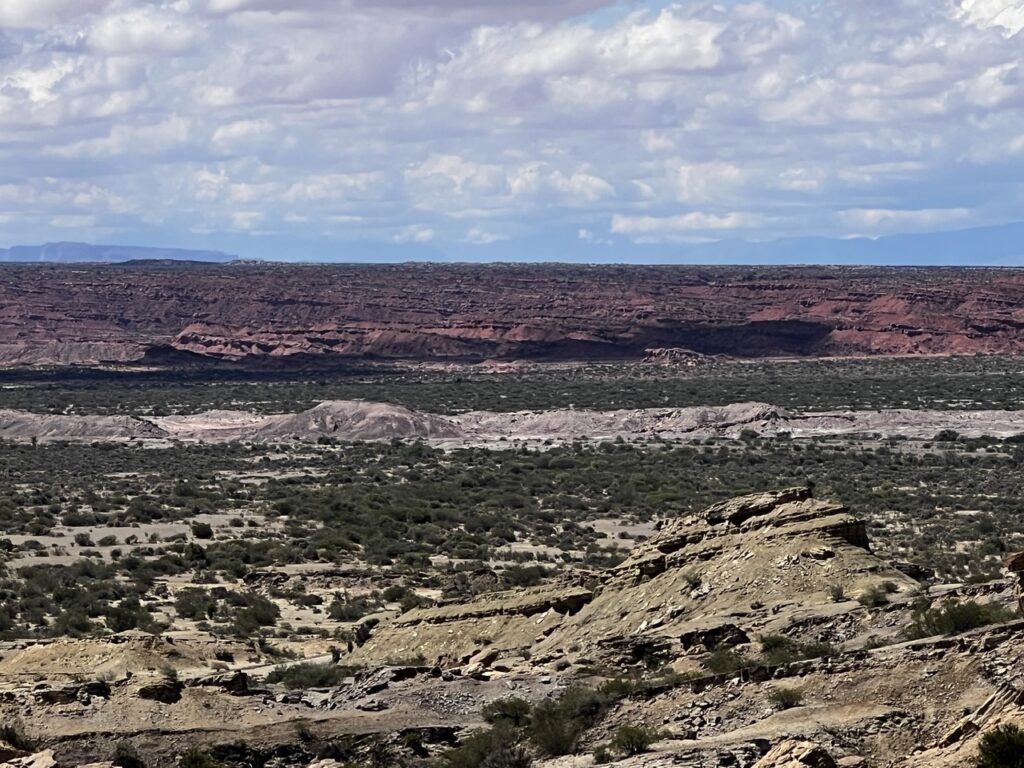
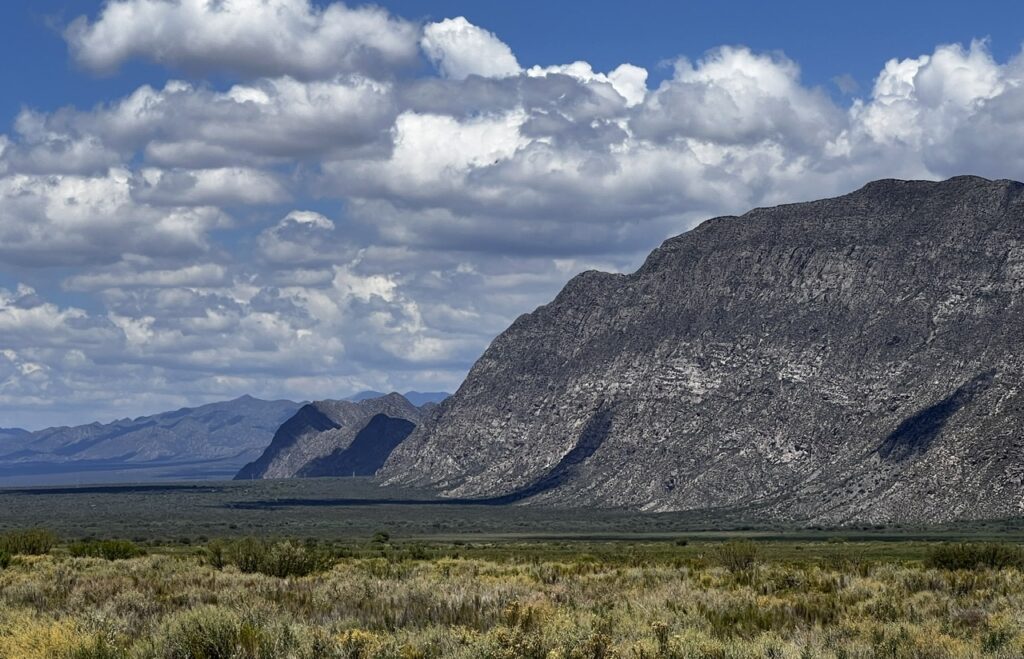
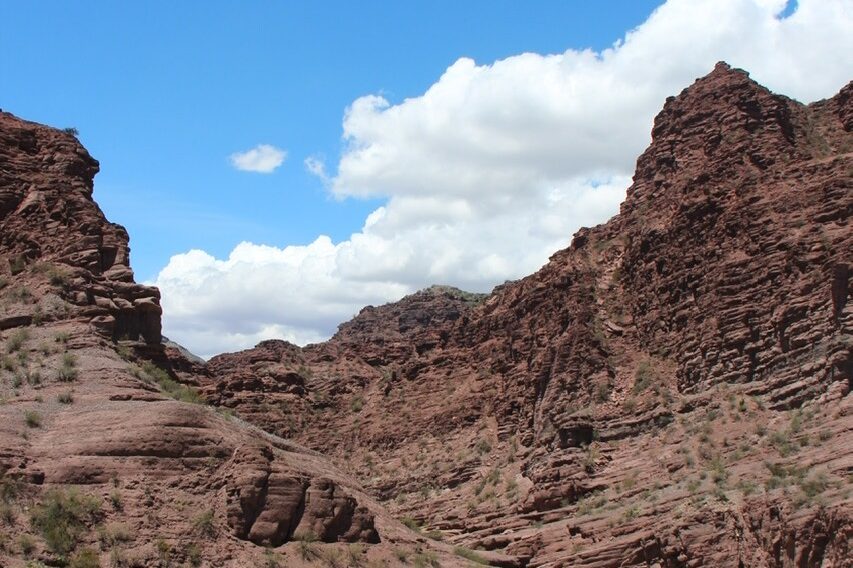
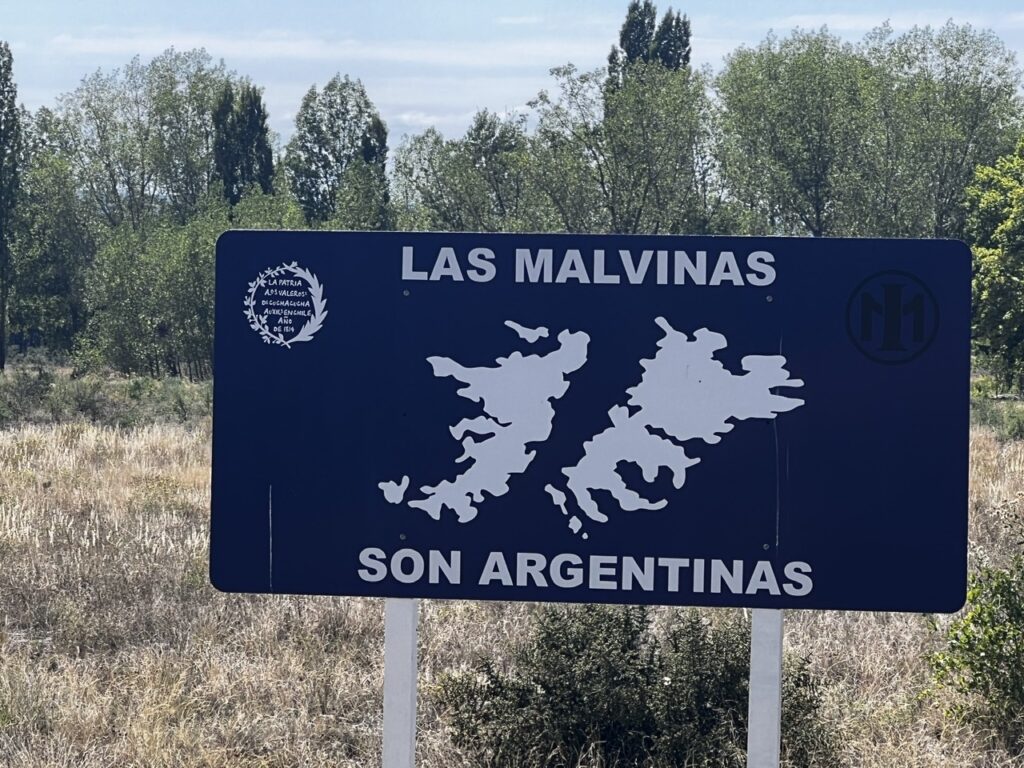
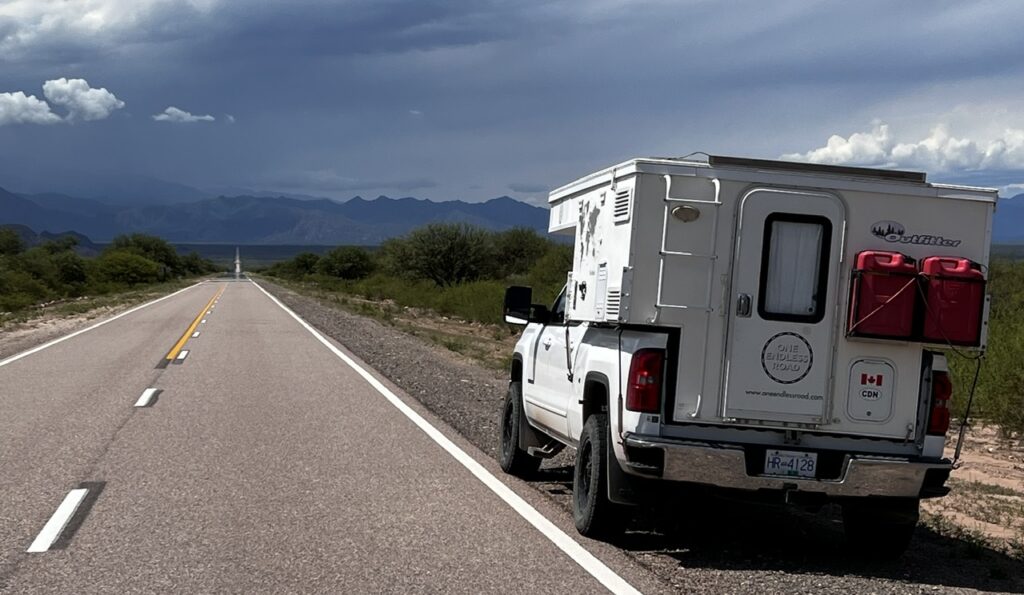
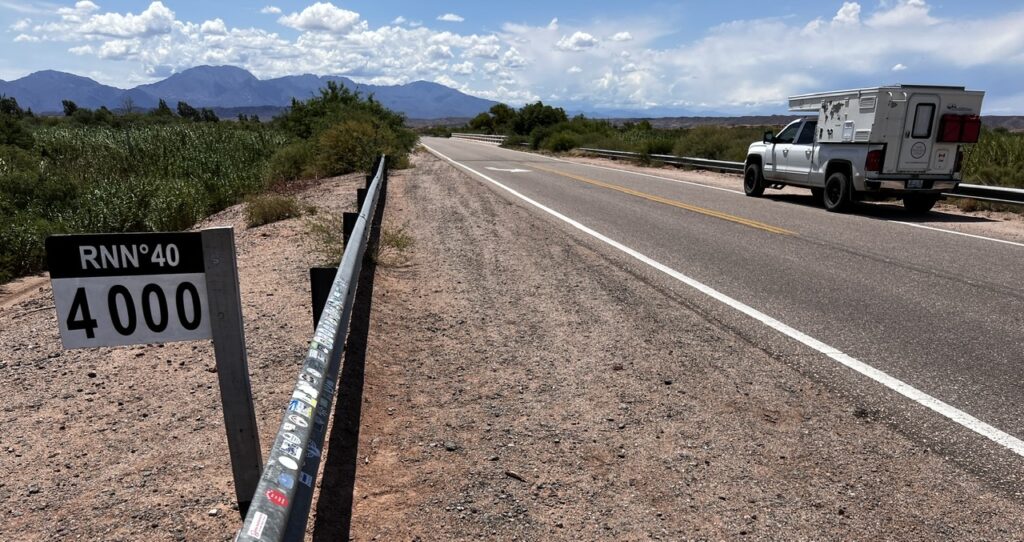
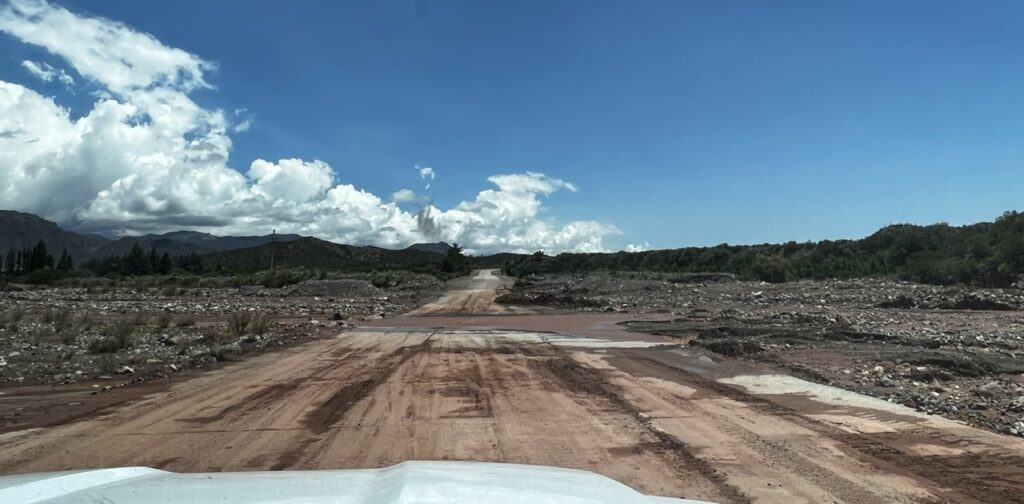

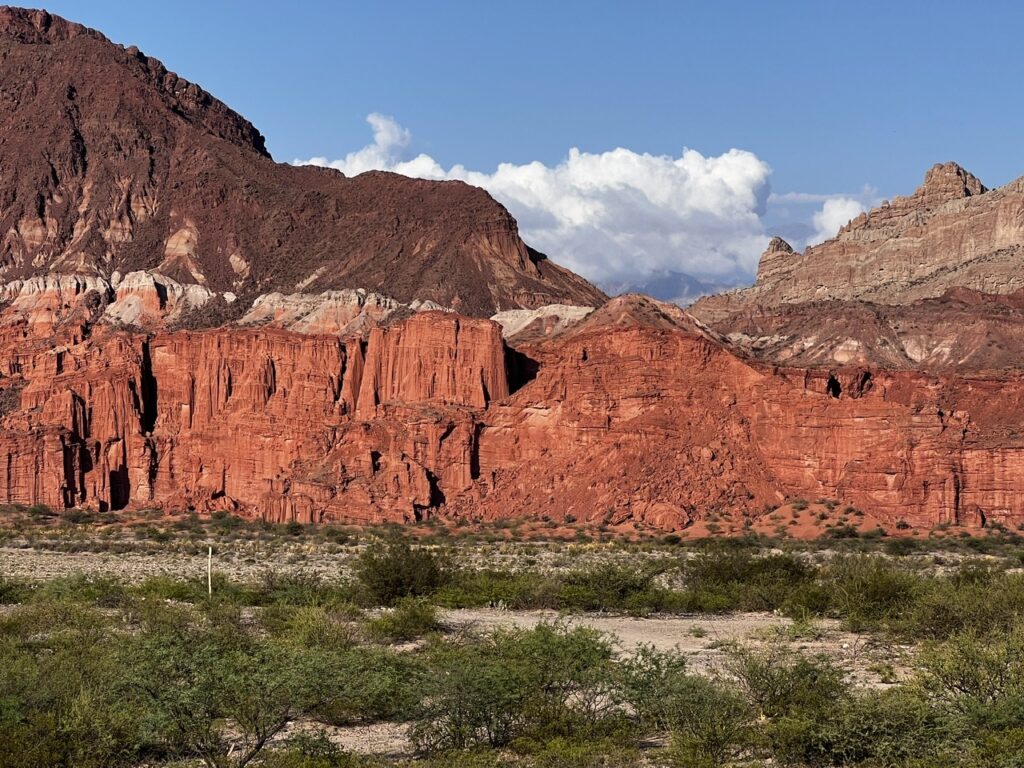
Only realized as we were pulling into Cafayete that there is an extensive wine industry in this area as well. Nothing on the scale of Mendoza but some impressive operations nonetheless. Will definitely need to explore this further – but will save that for next week’s blog.
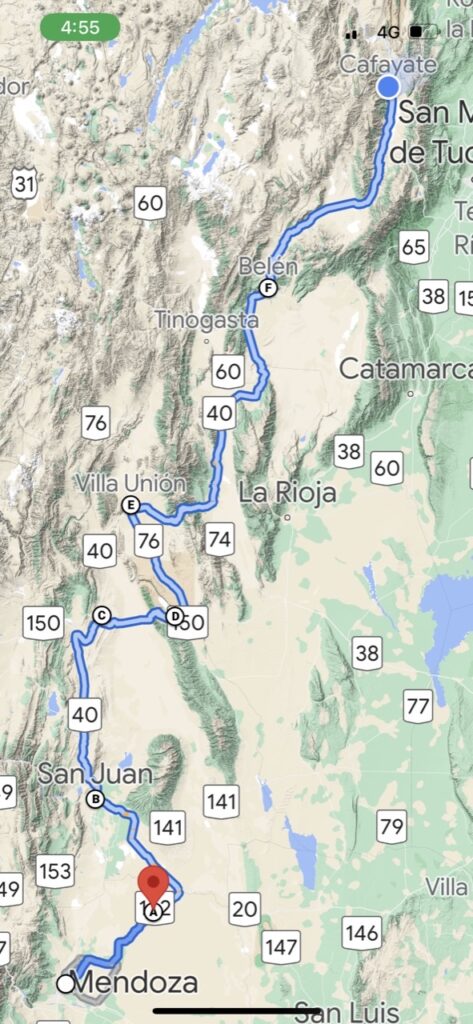

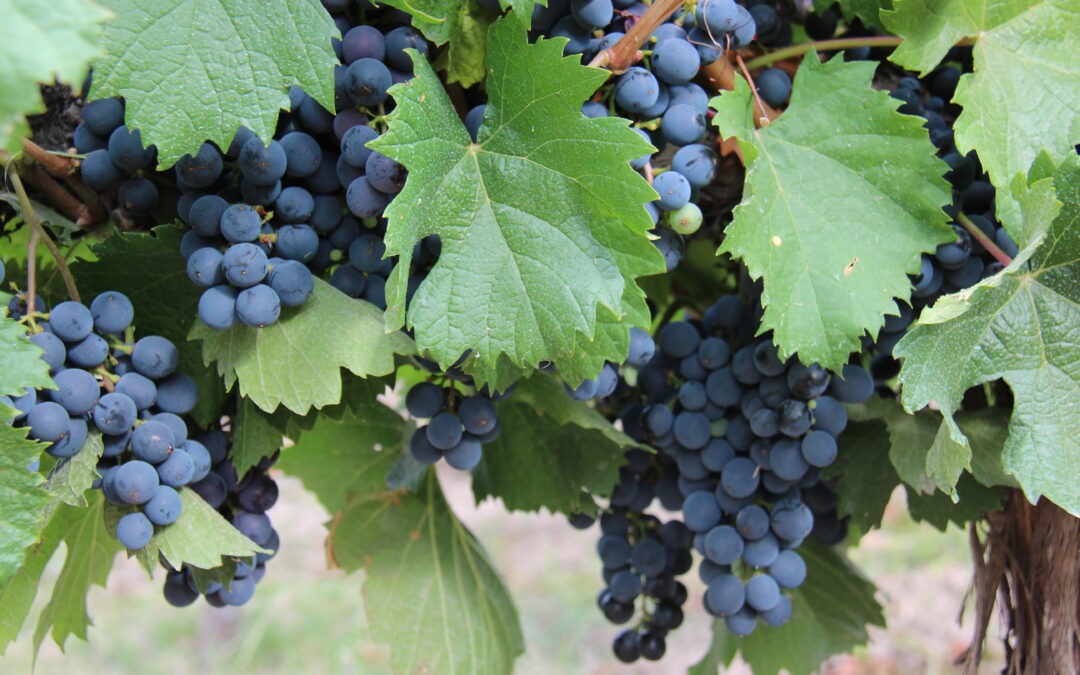
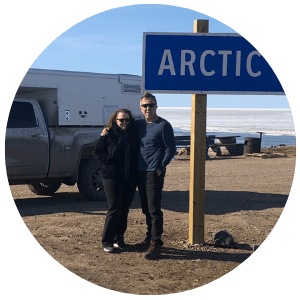
Still following along and dreaming. I see in some of your pics vehicles towing smaller trailers. Have you come across any travellers like yourselves towing camping trailers? They seem to be getting more popular among the overlanding community here in North America although they are usually specialty bult for rough terrain.
Hi Earle,
Yes, we are seeing quite a few now in Argentina- more trailers here than anywhere else. Having said that, they are ALL locals. I have yet to see a single overland traveller that is towing anything on the PanAmerican highway. I am sure there is the odd one but it is extraordinarily rare. Whenever anyone asks about it on the forums they are overwhelmingly told to forget it – too long, too awkward to park, double fees at toll booths, too awkward to drive in the narrow, tight turns you deal with in much of Latin America. Less so in Argentina though.
And that does not even address the massive cost of shipping, where longer = more $$$$. It’s just different down here….much different and there are issues to consider if you come this way.
As to terrain, no issue, that would be no problem and the specialty built ones you refer to are popular in North America and Australia where the issues I speak of above are non existent, or at least very secondary.
Hope that helps but by all means float the question on the PanAmerican Travellers forum ( but I am pretty sure I know what you will hear ! ).
Hope that helps ?
Great story yet again. Love the changes in the landscapes. Interesting that they have great telecommunications coverage wherever you travel in South America. Even though it is improving here in Australia, there are still continuous days when we don’t have any phone service other than our satellite phone. We are now counting down the weeks til we set off again – at the moment we can get into a most states, but still not WA. Nice to see you propping up the wine industry in South America. We enjoyed some whilst in Chile.
Yes the landscape changes have been welcome !
Their cell coverage here is pretty good – we see towers everywhere but the “pay as you go” plans that we have to use tend not to offer roaming so it can be frustrating when you have a phone, you see a tower nearby……..and you have no signal !!!! It sometimes happens. We solve that to some extent by getting different plans on each phone. No sat phones yet for us !
Hope you guys can get over to WA soon….time he opened up I think !
Another great selfie! It looks like somebody got a haircut! Or do you have a man bun? 😄
That’s a great photo of the biker’s banner. Good thing you have the world map on your truck so you can show them where you’re from. Maybe you should memorise, “¡No británico! ¡¡¡Canadiense!!!”
Looks like you’re enjoying the ‘almost free’ wine. 🍷🍷🍷
Congratulations on the milestones. That’s a lot of driving! To put 50,000 km into perspective, the circumference of our planet is only 40,000 km.
We’re doing well here. Weather has become relatively balmy 🌤 😎. There seems to be a few protests going on. Looking forward to Costa Rica!
And we’re also looking forward to your next installment.
🎶 On the Road Again, Can’t wait to Get On the Road Again 🎵
Hello Charlie !
No, have not had a haircut yet ( just can’t find a barber, lol ! ).
Funny thing about the little Canadian flag on the back of the camper ( and the international “CDN” sticker ) is that almost nobody down here recognizes either. All they look at is the plate because down here they all identify which country you are from ( ours does not and it confuses people – add in the “British” and then “Columbia” ( spelt differently than “Columbia” ) and you can see what I mean !!!!
Glad to hear things are starting to warm up back in BC, just another month of the real cold stuff and then it gets nice – just make sure it’s nice and warm when we get back, please lol ! Hope Penny is on the mend.
Ciao !
Very interesting Jeff especially being British and ex British army I missed the Falklands war barely however interesting how they still view it .ironically calling our van ‘Maggie’ after Maggie thatcher would possibly irritate them even more especially her close links with Pinochet . Hope you are both well my friend.
Hola Spencer !
Yes, we were told to tread delicately on the “Malvinas” topic with locals, so have heeded that advice. Not sure people would catch the “Maggie” connection so you are likely safe there ( assuming you bring your rig down here ).
Pinochet not really an issue for the Argentines, but very divisive figure among Chileans. We have ( and I kid you not ) met Chileans who loved the guy ( because he overthrew Allende, a Marxist ) and met others who fled the country BECAUSE he deposed Allende. Never a dull moment when it comes to Latin American politics ! But, got to know your audience as the saying goes…
Thank you for another interesting read! We’re enjoying your adventure. Safe travels
Thanks guys. Hope all is well in Abbotsford !